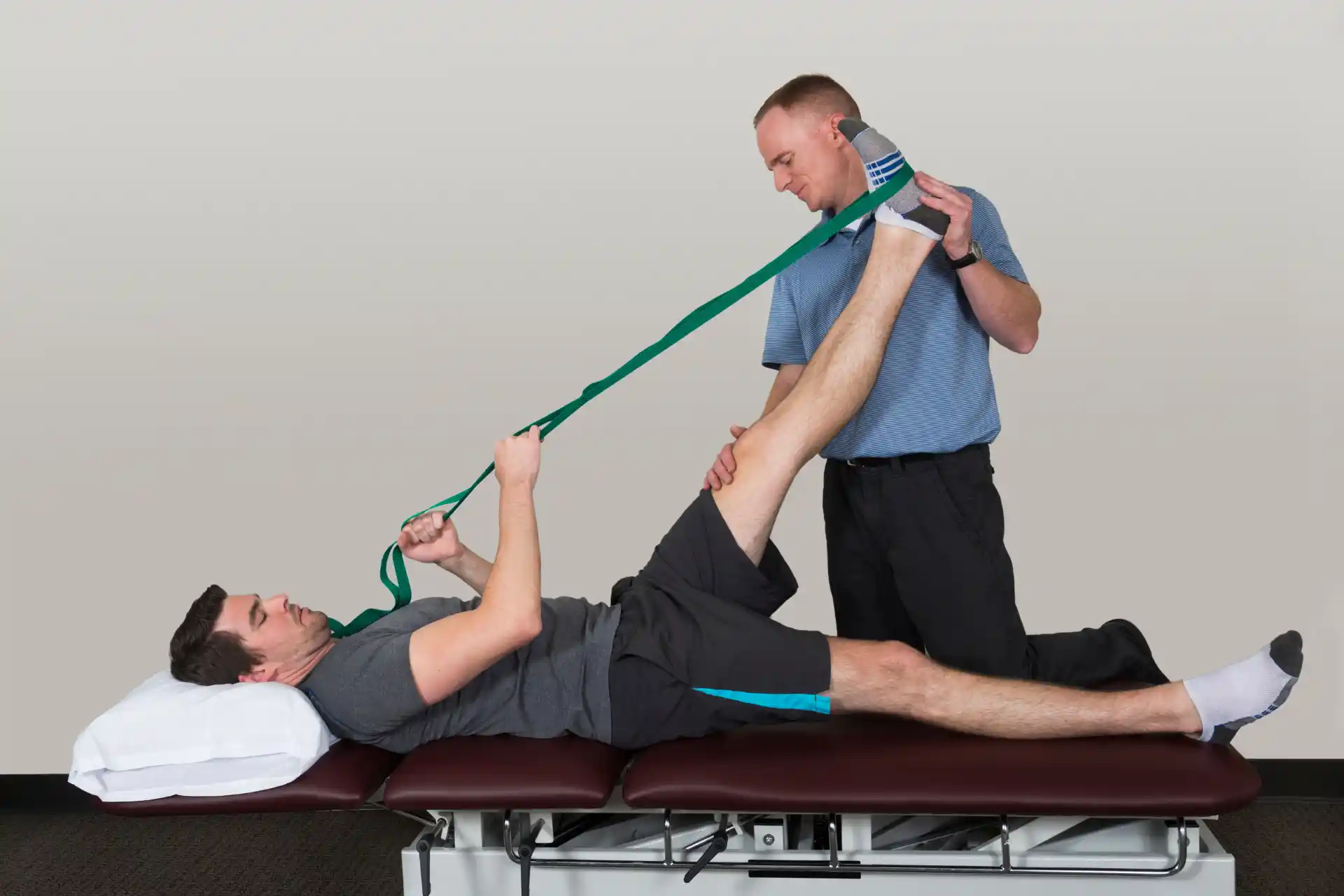Understanding Carpal Tunnel
If you’ve been feeling the telltale tingling, numbness, or wrist pain that suggests carpal tunnel syndrome, you’re not alone.
In fact, this condition makes up about 90% of all neuropathy cases, mainly because the median nerve gets compressed in a tight space in your wrist.
Many people with mild to moderate symptoms find relief by adopting carpal tunnel exercises as part of a broader management plan.
Below, you’ll see seven exercises that can help ease discomfort and even ward off more invasive treatments. Each move is gentle, quick to learn, and useful alongside other strategies like wearing a carpal tunnel brace or adjusting repetitive tasks.
Always consult with a healthcare professional before starting a new exercise regimen for your carpal tunnel syndrome.
Shake It Out For Quick Relief
Waking up in the middle of the night with a tingling or numb hand can be frustrating.
One straightforward tactic is the “shake it out” exercise, which is exactly what it sounds like—letting the wrist hang loosely and shaking your hand to get some immediate relief.
- Simply let your hand dangle, then shake lightly for 5–10 seconds.
- Repeat as needed until the discomfort eases.
If you often wake up with pain or numbness, also consider wearing a brace or splint at night to keep your wrist in a neutral position.
Frequent nighttime symptoms sometimes point to a larger underlying issue, so stay in touch with a healthcare provider if you’re not seeing improvement.
Discover Wrist Rotations
Wrist rotations are often considered one of the simplest carpal tunnel exercises that doubles as a warm-up, but don’t underestimate their benefits. By gently rotating your wrists, you help loosen tight ligaments and get more blood flowing to the area.
- Hold your arms out in front of you, palms down.
- Rotate both wrists inward, making a circular motion.
- Complete five rotations, then reverse direction for another five.
Simple warm-ups like these can be done a few times a day—especially before activities such as prolonged typing or using vibrating equipment (WebMD).
If you ever feel numb fingertips or if your thumb goes numb, these rotations may give short-term relief too. But if numbness persists, you may need to look at other carpal tunnel syndrome treatments.
Try Finger And Thumb Stretches
Your fingers and thumb do a lot more work than you might realize, so giving them a stretch is critical for overall hand health. Finger stretches help improve flexibility, while thumb stretches target muscles near the base of your hand that often get overlooked.
- Finger Stretches:
- Spread your fingers apart, then bring them back together.
- Repeat this 5–10 times.
- Thumb Stretches:
- Gently pull your thumb back until you feel a mild stretch at the base.
- Hold that position for 10 seconds, then release.
These stretches are recommended for those with minor to moderate carpal tunnel syndrome, especially if you do them a few times per day. Try pairing them with short breaks from typing or crafting tasks.
In fact, weaving in rest breaks from repetitive hand movements is often a key recommendation for managing median nerve compression.
Do The Prayer Stretch
This classic stretch—sometimes called the “prayer stretch” because of its hand position—targets the wrist flexors, which can become tight when you keep your hands flexed over a keyboard or a phone for extended periods.
- Place your palms together in front of your chest, fingers pointing upward (a prayer position).
- Slowly lower your hands while keeping them together, stopping when you feel a comfortable pull in your wrists and forearms.
- Hold for 15–20 seconds, then gently return to the start position.
Adding a stretch like this one to your daily routine can make a difference in combination with behavior changes, ergonomics, or wrist supports.
Add Wrist Flexor Stretches
Your wrist flexors are the muscles on the palm side of your forearm. When these become too tight, you can end up placing constant strain on the median nerve.
Wrist flexor stretches are quick to perform and help release tension before it builds.
- Extend one arm straight in front of you with palm facing up.
- Use your opposite hand to gently pull your fingers back toward your body until you feel a mild stretch along your forearm.
- Hold for 10–15 seconds, then switch sides.
For best effect, do them a few times daily—ideally before tasks that could strain your wrists, such as hammering, cutting, or even extended gaming (WebMD).
If you’re already experiencing elbow-related issues, such as a pinched nerve in elbow, ask a professional which stretches are safest first.
Add Wrist Extensor Stretches
Your wrist extensors are on the back of your forearm. They get plenty of wear and tear if you type or use a mouse all day, often leading to stiffness or imbalance if not tended to.
- Extend one arm with the palm facing down.
- Use your other hand to gently press the back of your extended hand downward.
- Hold for 10–15 seconds, then switch sides.
Like the wrist flexor stretches, these are best done regularly—ideally a few times a day. Many folks combine both wrist flexor and wrist extensor stretches in a single session for a balanced approach.
If you feel sharp pain, it could signal too much tension or even an aggravation of nerve compression. In that case, dial back the stretch or pause and consult your provider.
Practice Tendon Glides
Tendon-gliding exercises help the median nerve and the tendons in the wrist and hand move together smoothly. This might reduce friction within the narrow passage of the carpal tunnel.
Just be aware that some professionals caution that nerve glides can occasionally worsen symptoms if your nerve is severely restricted, so proceed with care.
- Start with your hand open, fingers straight.
- Make a gentle fist, then open your hand again.
- Next, curl your fingers halfway—creating a “hook” shape—then straighten again.
- Finally, curl your fingers fully into a fist (without gripping tightly), and release.
Aim for five or six repetitions per hand. Some recommend applying ice afterward to reduce swelling (Medical News Today).
If the gliding feels uncomfortable, skip this exercise and try other methods, or talk to a therapist for personalized guidance.
Consider Extra Support For Best Results
Your daily stretches are just part of the bigger picture. Carpal tunnel exercises work better when paired with other smart choices:
- Wear A Wrist Splint: A carpal tunnel brace can hold your wrist in a neutral position, reducing pressure.
- Apply Temperature Therapy: While many doctors lean toward using heat for healing (Elite Carpal Tunnel), in some cases, cold packs or short ice baths can offer quick relief from swelling or sharp pain.
- Take Breaks: Limit repetitive gripping or bending. If possible, rotate tasks so your wrists aren’t stuck in the same motions for too long.
- Watch Your Posture: Make sure your desk height, chair, and keyboard placement support neutral wrist angles.
- Assess Medical Conditions: Obesity, rheumatoid arthritis, diabetes, and hypothyroidism often heighten the risk for nerve compression syndrome. If you suspect these or notice ongoing numbness, discuss testing and management with your doctor.
If your issues are severe or unresponsive, talk to a hand specialist about advanced therapies like injections or surgical release.
These carpal tunnel exercises can be a real game-changer for mild to moderate discomfort. They require only a few minutes daily but can help you steer clear of more aggressive interventions.
Remember, improvements might be gradual, and you might need to make other adjustments—like switching up repetitive tasks or finding a more ergonomic workstation.
You’ve taken a great step by learning these moves. Give them a try, stay consistent, and check in with your healthcare provider if you notice persistent or worsening symptoms.
Read more on other conditions caused by nerve compression or damage such as nerve entrapment, sciatica and piriformis syndrome.
Seek RELIEF®
RELIEF® is a science-backed, targeted approach that targets dysfunctional fascia—connective tissue that may contribute to nerve compression and carpal tunnel syndrome.
Using a minimally invasive technique called hydrodissection, RELIEF® releases stuck or adhered layers of fascia and soft tissue, that may be putting pressure on nearby nerves. This process may help relieve the tingling, numbness, and pain often associated with conditions like carpal or cubital tunnel syndrome.1,2,3,4,5,6
If you are in the area and looking for a Miami wrist pain specialist, contact us today to schedule a consultation and learn more about how RELIEF® may help with compressed nerves and cubital/carpal tunnel symptoms.




.jpg)

.svg)